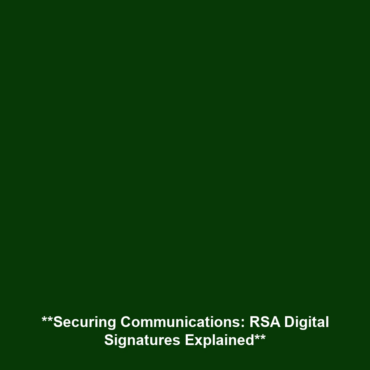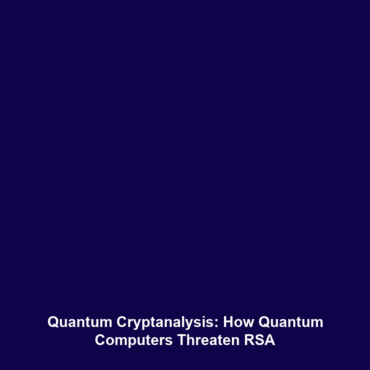Understanding Secure Communications in Cryptography
Introduction
Secure Communications is a critical aspect of the field of Cryptography, ensuring confidentiality, integrity, and authenticity in the digital communication landscape. As information exchange becomes increasingly vulnerable to cyber threats, the necessity for robust cryptographic techniques to safeguard sensitive data has never been more pronounced. This article delves into the core principles of Secure Communications, its applications, current challenges, and the future of this essential domain within Cryptography.
Key Concepts of Secure Communications
Secure Communications encompasses several key concepts that are fundamental to Cryptography. These include:
Encryption and Decryption
The two primary processes of Secure Communications—encryption and decryption—enable the transformation of plaintext into ciphertext and vice versa, ensuring that only authorized users can access the information.
Digital Signatures
Digital signatures play a crucial role in verifying the authenticity of a message, providing assurance that it has not been altered during transmission.
Authentication Protocols
Authentication protocols are essential to confirm the identities of users involved in a communication, ensuring that parties are who they claim to be and thereby mitigating risks associated with impersonation.
Applications and Real-World Uses
The applications of Secure Communications in Cryptography are vast and varied. Significant examples include:
- Online Banking: Secure Communications ensure that financial transactions are conducted safely, protecting users from fraud.
- Email Encryption: Services like PGP (Pretty Good Privacy) help secure electronic communication between individuals.
- Virtual Private Networks (VPNs): VPNs utilize Secure Communications protocols to enable secure remote access to networks and protect user privacy online.
Current Challenges of Secure Communications
Despite advancements in Secure Communications, several challenges persist:
- Vulnerability to Cyber Attacks: Constant evolution of cyber threats can compromise secure channels.
- Implementation Complexity: Integrating secure protocols into existing systems can be complex and resource-intensive.
- Scalability Issues: As organizations grow, maintaining secure communication across a large network becomes increasingly challenging.
Future Research and Innovations
The field of Secure Communications is poised for exciting innovations, including:
- Quantum Cryptography: Harnessing quantum mechanics could revolutionize the way secure messages are encrypted and transmitted.
- Blockchain Technology: Utilizing decentralized ledger systems for enhancing secure communications and preventing unauthorized access.
- Artificial Intelligence: AI-driven security protocols could streamline the detection of anomalies in secure communications.
Conclusion
Secure Communications is an indispensable component of Cryptography, vital for protecting information in today’s digital world. Understanding its principles, applications, challenges, and future advancements can empower individuals and organizations to better safeguard their communications. For further insights, explore our other articles on Encryption Techniques and Current Cybersecurity Trends.









